Islam in Mexico
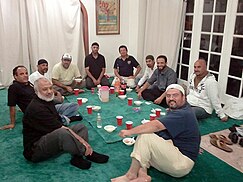
| Islam by country |
|---|
 |
|
|
Mexico has a religious minority of Muslims, mostly constituted by converts,[1] and Mexicans of African, Asian, European, and South American origin, as well as their children, born in Mexico.
Mexico is a predominantly Christian country, with adherents of Islam representing a very small minority. But they are free to proselytize and build places of worship in the country [2] due to the secular nature of the state, established by Mexico's constitution.
According to the 2010 INEGI census, there were only about 2,500 individuals who identified Islam as their religion.[3] And the number of Muslims in Mexico had risen to more than 7,500 as of 2020.[4][5]
Muhammad Ruiz Al Meksiki, general director of the Salafi Center of Mexico (CSM), estimates that in 2015, there are about 10,000 Muslims in Mexico.[6]
History and Organizations
[edit]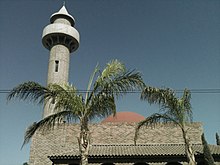
During the Mexican Porfiriate, there was an open policy regarding investment and migration, mainly of people of European countries.
Although, some immigrants from other countries, such as Turkey, Syria, Lebanon and Palestine, also arrived during that period.
For the most part, they were Christians escaping religious persecution of the Ottoman Empire; but there were a few Jews, some non Sunni Muslims, and people of other religions, also immigrating into Mexico due to economic opportunity or escape from religious persecution.
The muslims who immigrated during the Porfiriate however, decided to settle down in places such as Yucatán, Veracruz, Nuevo León, Coahuila, Mexico City and Puebla; due to the economic opportunities said states had to offer.
Once there, several Islamic Organizations were formed, with most of them adhering to the Sunni Branch of Islam; however, Salafists, Shia's, and Sufi muslims also have presence and mosques of their own.
Today, most Mexican Islamic organizations focus on grassroots missionary activities, which are most effective at the community level.
The most important Islamic organizations in Mexico include:
The Educative Center of the Muslim Community In Mexico: Sunni organization, which operates in Mexico City. It runs an educational center, managed mainly by Muslims from Egypt and the Middle East, and is run by Said Louahabi.
Cultural Islamic Center of Mexico: Sunni organization headed by Omar Weston, a British-born Mexican convert to Islam, which has been active in several cities of northern and central Mexico.
In the state of Morelos, it operates a mosque, called “Dar as Salaam”, and it also operates Hotel Oasis, a hotel that offers halal vacation alternatives for Muslim travelers and accommodation for non-Muslims sympathetic to Islam.
This group was the subject of a study carried out by British anthropologist Mark Lindley-Highfield, of the Department of Anthropology at the University of Aberdeen.
Musalla Al-Ajirah: Run by Muhammad Abdullah Ruiz, a former deputy to Weston, the Musalla is considered to be the only center of salafists in the country.
Sufi Order in Mexico City: Sufi organization, which is a Mexican branch of the Nur Ashki Jerrahi order, headed by two women, Shaykha Fatima Fariha and Shaykha Amina Teslima.
Al Hikmah Institute of Arabic Language and Culture: Sunni organization run by Isa Rojas. A Mexican convert to Islam, who studied Islam in the University of Medina, within the capital city.[7]
Amir al-Muminin Islamic Center: Twelver Shia organization which operates in Mexico City, Mexico State, and Morelos. It hosts religious events for Mexican Shia Muslims, such as the commemoration of Muharram,[8] Mawlid,[9] Fatimiyya,[10] among others.[11]
It also provides halal food options for Mexican Muslims[12] and educative resources for Shia's, Sunnis, and non Muslims alike.[13]
Demographics
[edit]
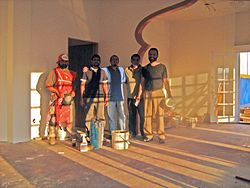
Islam represents less than 0.01% of the population in Mexico.[14]
The approximate number of Muslims by State goes as follows:
| Federal Entity | Muslim Population (2010[update]) |
|---|---|
| 2,000 | |
| 32 | |
| 190 | |
| 20 | |
| 32 | |
| 70 | |
| 16 | |
| 650 | |
| 78 | |
| 34 | |
| 100 | |
| 26 | |
| 38 | |
| 202 | |
| 117 | |
| 200 | |
| 98 | |
| 15 | |
| 126 | |
| 758 | |
| 106 | |
| 100 | |
| 142 | |
| 56 | |
| 200 | |
| 45 | |
| 13 | |
| 63 | |
| 19 | |
| 86 | |
| 43 | |
| 13 | |
| 500 |
Indigenous Mexican Muslims
[edit]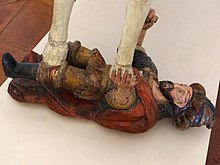
Islam has been present in Mexico since the mid-1950s, due to mass Spaniard and Arab settlement.
The Spanish Murabitun community, now based in Granada, Spain, had one of its missionaries involved in the spread of Islam.
Muhammad Nafia (formerly Aureliano Pérez), arrived in the state of Chiapas shortly after the Zapatista uprising and established a commune in the city of San Cristóbal.
The group, characterized as anti-capitalistic, entered an ideological pact with the socialist Zapatistas[15] group. The President Vicente Fox voiced concerns about the influence of the fundamentalism and possible connections of the Zapatistas to the Basque terrorist organization Euskadi Ta Askatasuna (ETA).
But it appeared that most converts had no interest in political extremism.[16]
By 1994, many indigenous Mayans and more than 700[17] Tzotzils had converted to Islam.[18]
In San Cristóbal, the Murabitun established a pizzeria, a carpentry workshop[19] and a Quranic school (madrasa) where children learned Arabic and prayed five times a day in the backroom of a residential building. It is reported that women in headscarves had become a common sight by then.[16]
Nowadays, most of the Mayan Muslims have left the Murabitun and established ties with the CCIM, now following the orthodox Sunni school of Islam. They built the Al-Kausar Mosque in San Cristobal de las Casas. Nevertheless, the vast majority of Native Mexicans today are not muslims.
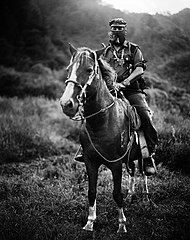
Mosques
[edit]This is a list of some, but by no means all mosques and Islamic meeting centers in Mexico.
- Centro Islámico del Norte. Av. Benito Juárez 603, Centro, 66230 San Pedro Garza García, N.L.
- Suraya Mosque in Torreon, Coahuila.
- Dar es Salaam Mosque in Tequesquitengo, Morelos.
- Tahaarah Mosque in Comitan, Chiapas.
- Al Kautsar Mosque in San Cristobal de las Casas, Chiapas.
- Al Medina Mosque in San Cristobal de las casas, Chiapas
- Musala Tlaxcala #30 San Critobal de las Casas, Chiapas
- Murabitun Mosque San Cristobal de las casa, Chiapas
- Salafi Mosque Muhammad ibn Abdul Wahab in Mexico City.
- Mezquita/ tekke de la Orden Jalveti Yerraji instituto Luz Sobre Luz in Mexico City.
- Masiid Omar, Centro Islamico Tijuana Beaches, Baja California, Mexico.
- Al-Hikmah Ciudad de México, Aragón, Mexico.
- Mezquita Euclides Euclides 25, Col. Anzures, Polanco, Ciudad de México.
- Mezquita Abu Bakr Don Luis 10, Nativitas, Benito Juàrez, Nativitas, Metro, 03500 Ciudad de México, CDMX
- Mezquita de guadalajara Centauro 2912, La Calma, 45070 Zapopan, Jal. Guadalajara.
- Musalah Al Ajirah in Margarita # 5 local, colonia Santa Maria la Ribera, Delegación Cuauhtémoc, CP 06400, Mexico City.[20]
- Amir al Muminin, Rubens 46, colonia San Juan, Alcaldía Benito Juárez, Ciudad de México. [21]
Moorish architecture in Mexico
[edit]

In Chiapa de Corzo, Chiapas, a fountain, known locally as "La Corona" or "La Pila" was built to provide the population with water.
This architectural work was built in annealed brick with a strong Mudejar influence.[22] It was built by the Spanish Dominican friars during the Colonial era in the sixteenth century.[23]
The Morisco Kiosk (Moorish Kiosk) in Colonia Santa María la Ribera was made by José Ramón Ibarrola for the Universal Exhibition of New Orleans from 1884-1885, in the neo-Mudejar style that was prevailing in Spain in the 19th century.[24][25]
Notable Muslims living in Mexico
[edit]Fitra Ismu Kusumo, Indonesian artist living in Mexico.
See also
[edit]References
[edit]- ^ LopezDorigaTeam (2015-01-13). "Musulmanes mexicanos sufren de discriminación por extremistas". López-Dóriga Digital (in Spanish). Retrieved 2024-11-18.
- ^ "Mexico". United States Department of State. Retrieved 2024-11-17.
- ^ Panorama de las religiones en México, 2010. Instituto Nacional de Estadística y Geografía. INEGI. https://www.inegi.org.mx/contenidos/productos/prod_serv/contenidos/espanol/bvinegi/productos/censos/poblacion/2010/panora_religion/religiones_2010.pdf Retrieved November 17th, 2024
- ^ "Diversidad. Estado de México". cuentame.inegi.org.mx. Retrieved 2024-11-17.
- ^ "Población en México por tipo de religión en 2020". Statista (in Spanish). Retrieved 2024-11-17.
- ^ ""México no tolera a musulmanes: Muhammad Ruiz Al Meksiki"". www.noroeste.com.mx (in Mexican Spanish). Retrieved 2024-11-17.
- ^ "EL ISLAM EN MEXICO". 2012-01-01. Archived from the original on 1 January 2012. Retrieved 2024-11-17.
- ^ Admin, Islam en México (2024-07-24). "Conmemoración de Muharram y 7° marcha Anual de Ashura en México". Islam En México (in Spanish). Retrieved 2024-11-17.
- ^ "Instagram". www.instagram.com. Retrieved 2024-11-17.
- ^ "Instagram". www.instagram.com. Retrieved 2024-11-17.
- ^ "Actividades de la Comunidad archivos". Islam En México (in Spanish). Retrieved 2024-11-17.
- ^ "Halal". Islam En México (in Spanish). Retrieved 2024-11-17.
- ^ "Halal". Islam En México (in Spanish). Retrieved 2024-11-17.
- ^ "Mexican Catholics find God in Islam". Public Radio International. 13 February 2014. Retrieved 19 March 2017.
- ^ Glüsing, Jens (2005-05-28). "Praying to Allah in Mexico: Islam Is Gaining a Foothold in Chiapas". Der Spiegel. ISSN 2195-1349. Retrieved 2024-11-17.
- ^ a b c Glüsing, Jens (28 May 2005). "Islam Is Gaining a Foothold in Chiapas". Der Spiegel. Retrieved 13 November 2011.
- ^ "Indígenas musulmanes abren plática sobre el Islam en San Cristóbal". quadratin.com. 22 August 2015. Retrieved 19 March 2017.
- ^ Lara Klahr, Marco. 2002. “¿El Islam en Chiapas?: el. EZLN y el Movimiento Mundial Murabitun,”. Revista Académica para el Estudio de las. Religiones 4(2002): 79-91 (in Spanish)
- ^ "Islam is the new religion in rebellious Mexican state Chiapas". RNW media. Retrieved 27 November 2015.
- ^ "Musalah Al Ajirah - Cuauhtémoc - HERE WeGo". HERE WeGo. Retrieved 31 October 2017.
- ^ "¿Quiénes Somos?". Islam En México (in Spanish). Retrieved 2024-11-17.
- ^ "Chiapa de Corzo" (in Spanish). Chiapas, Mexico: Secretaría de Turismo de Chiapas. Archived from the original on January 19, 2011. Retrieved May 11, 2020.
- ^ "Chiapa de Corzo". Enciclopedia de los Municipios de México Estado de Chiapas (in Spanish). Mexico: Instituto Nacional para el Federalismo y el Desarrollo Municipal and Gobierno del Estado de Chiapas. 2005. Archived from the original on March 27, 2012. Retrieved May 11, 2020.
- ^ Arturo Reyes Fragoso (August 13, 2006). "Santa María la Ribera, colonia centenaria" [Santa María la Ribera, the century colonia]. El Universal (in Spanish). Mexico City. Retrieved May 11, 2020.
- ^ "El Kiosco Morisco de Santa María la Ribera, ícono de la CDMX". mexicodesconocido.com.mx. May 2018. Retrieved 11 May 2020.
